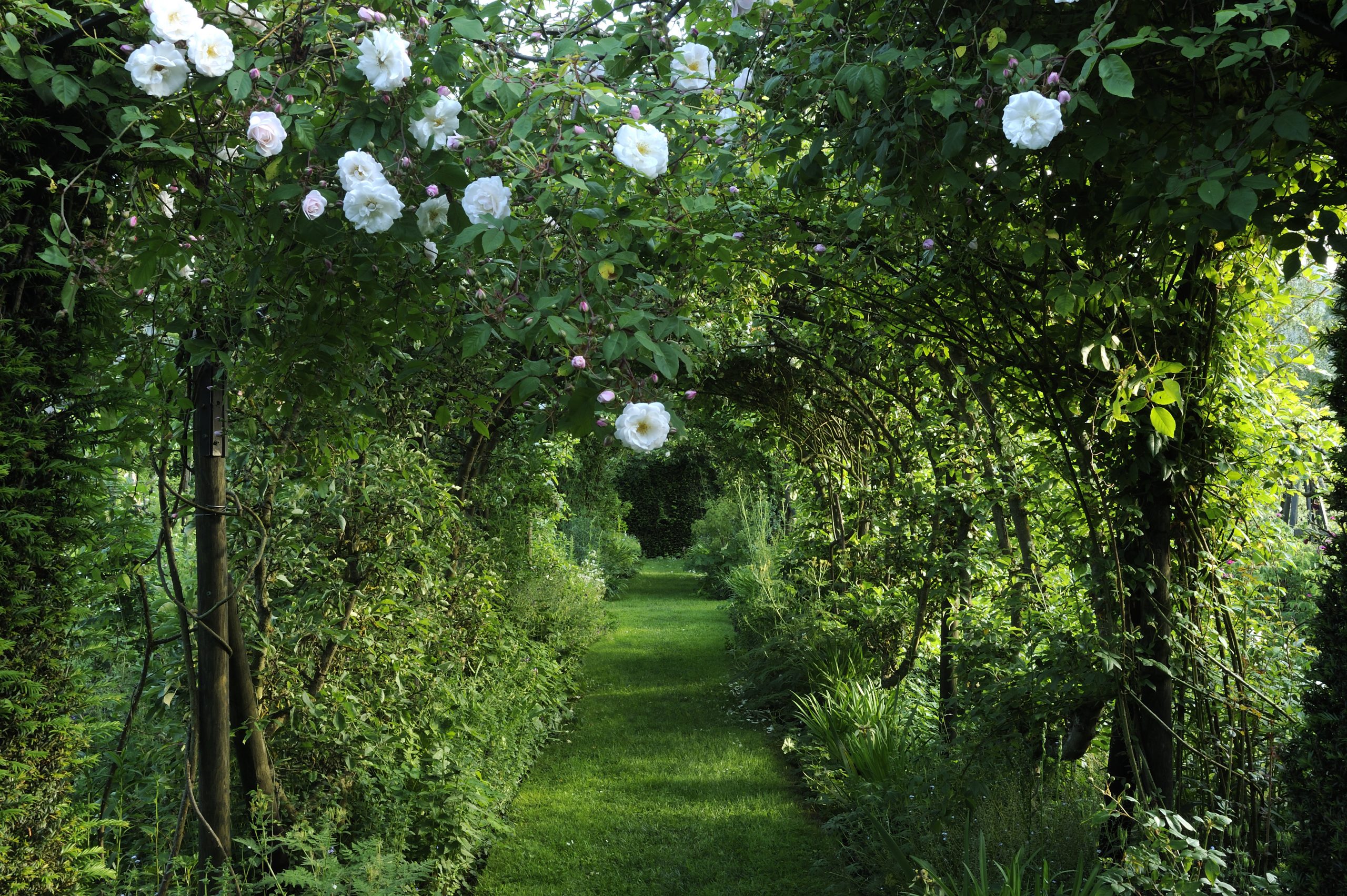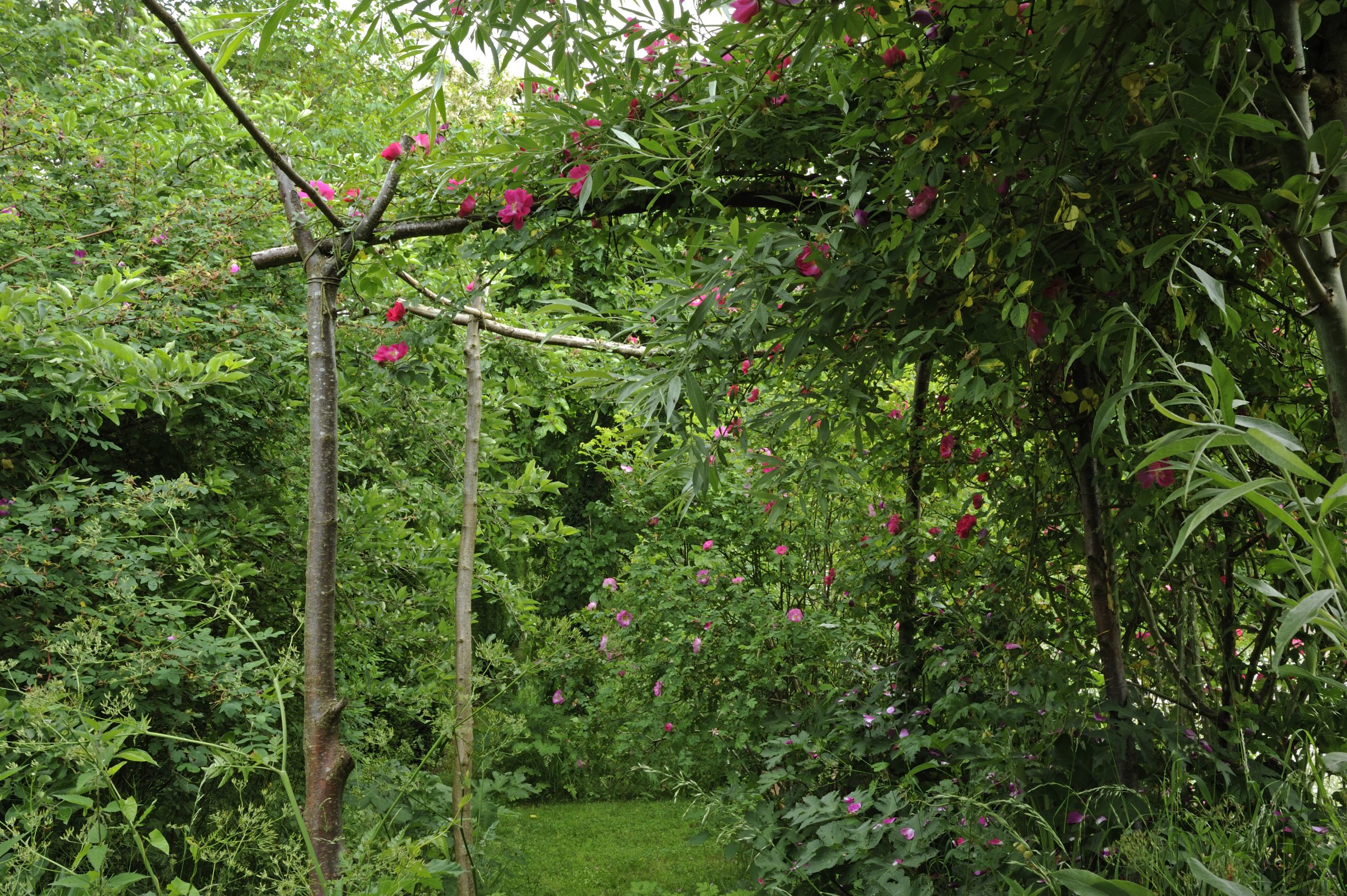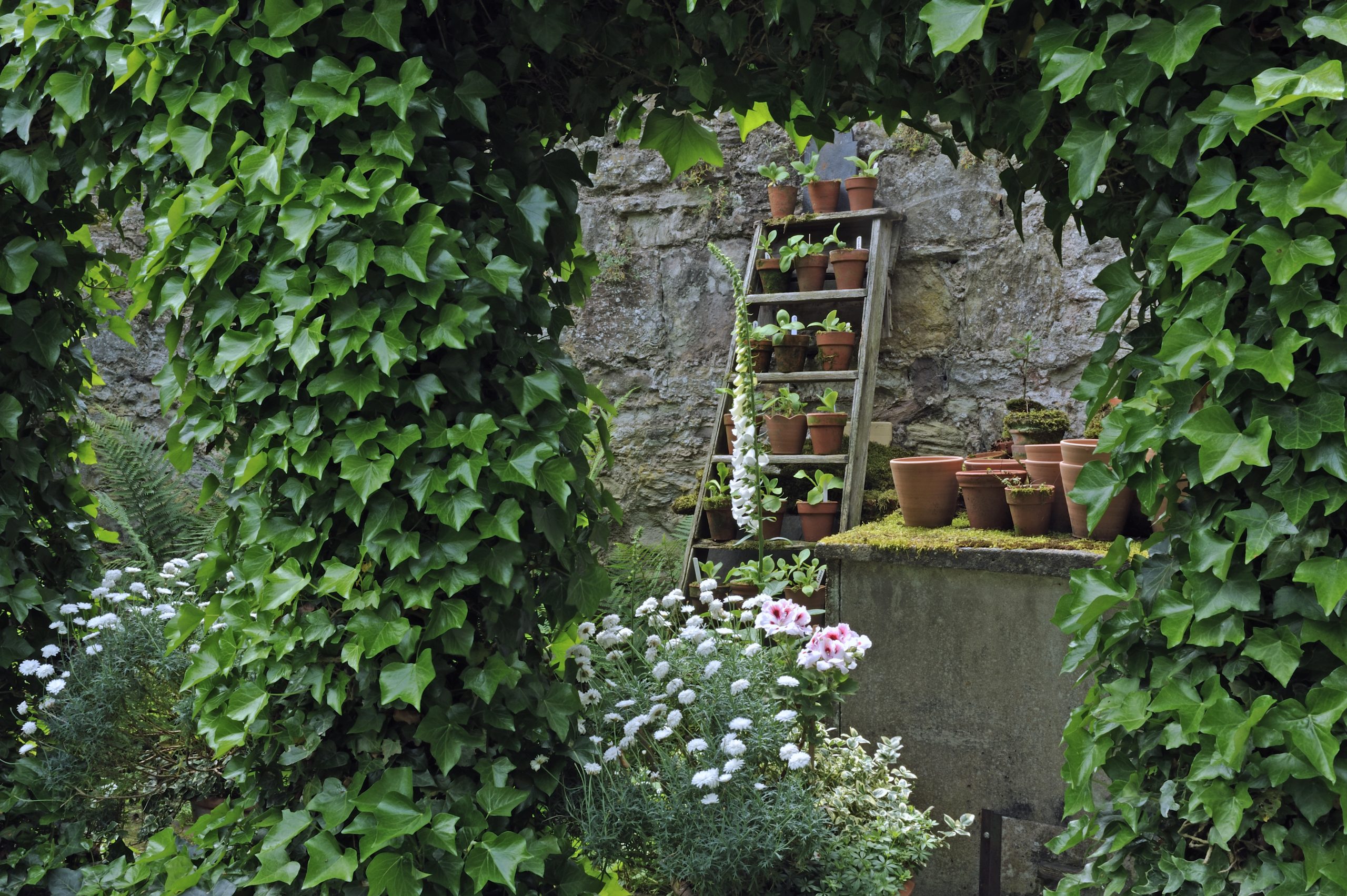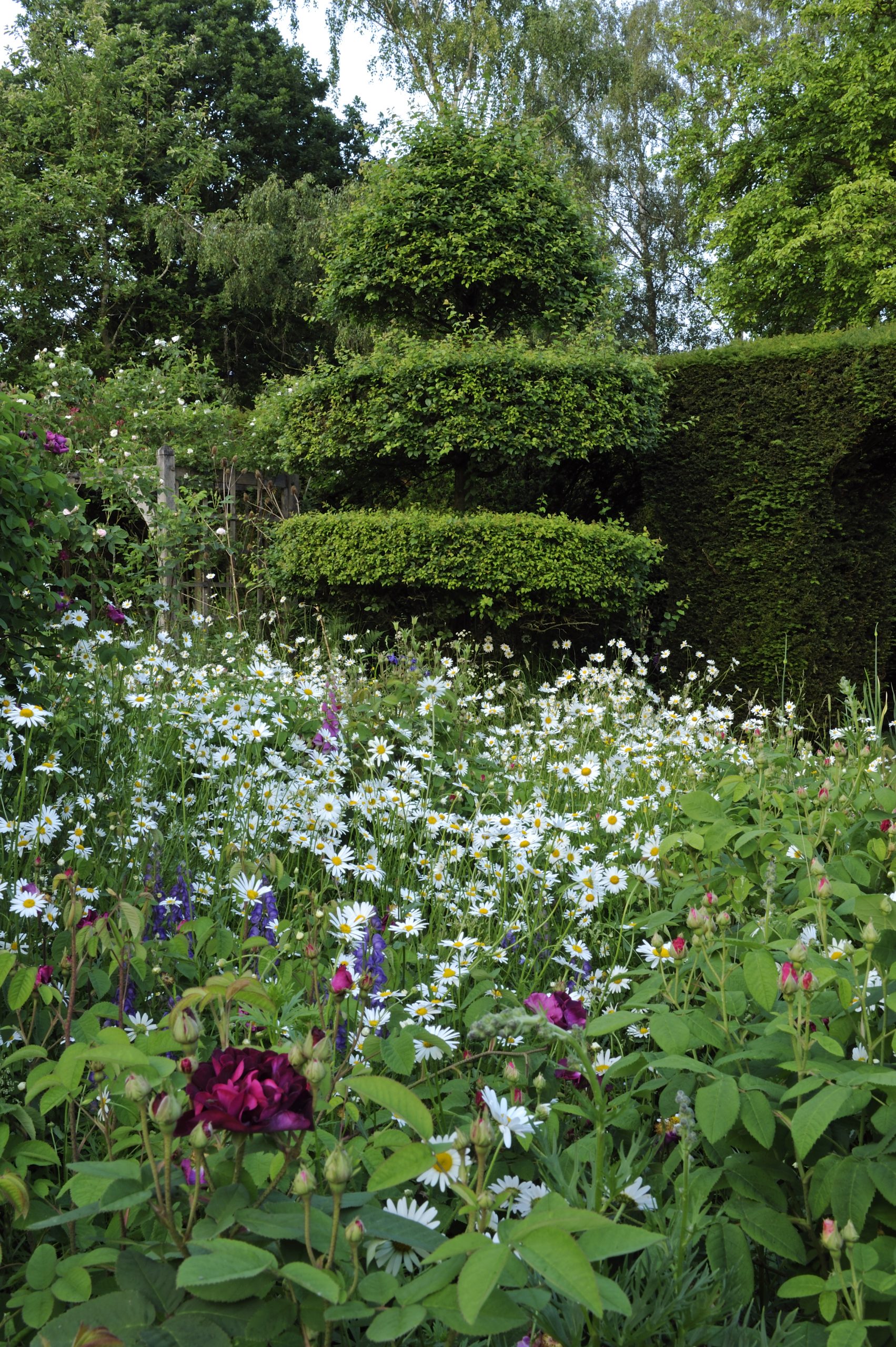The Dower House Garden at Morville: Where meticulous historical research meets painstaking gardening
The historic Dower House Garden at Morville, Shropshire, has been sensitively re-created by its owner, finds Non Morris. Photographs by Val Corbett for Country Life.


The generous arched front door, framed by Morello cherries and light skeins of pale yellow roses, will stay open this summer, just as it has done since Katherine Swift arrived at the handsome Shropshire stone Dower House 30 years ago to make a garden. The house forms part of a group of dwellings set around Morville Hall, an easy stroll away from the peaceful 12th-century Church of St Gregory.
The evolution of this richly layered, painstakingly nurtured garden is recorded in Dr Swift’s book, The Morville Hours. Both garden and book tell the history of this small settlement and the people who have lived here from its monastic beginnings to the present day.

‘It began as an exercise in garden history,’ Dr Swift explains, ‘but became intertwined with the stories of all the people who lived here and with the story of me making the garden and the story of my parents and their love affair and why they ran off to Shropshire the summer before the Second World War broke out having only known one another for three weeks…’.

An unstoppable storyteller, her enthusiasm is infectious: ‘For me, every plant has a personal story, too, like the white lilac my father grew in Somerset and me climbing out of the bedroom window into it when I was five or six and it was too sunny to be put to bed early.’
Then, of course ‘there is the history of the lilac itself and its journey from the near east and the people who first brought those plants and seeds into this country …’
Dr Swift’s own story at Morville began when she was Keeper of Early Books at Trinity College, Dublin. Her husband, Ken, who had remained in Oxford, used to meet her at Heathrow every Friday night with a wallet full of photographs of houses he had been to look at — ‘places for me to make a garden’. He knew that, if he found the right one, it ‘would trump the job’ she loved.

One Friday night, he said ‘I think I’ve found it’ — and he was right. Despite initial hesitation about taking on a 20-year lease rather than buying a house, she was smitten and arrived with ‘no income apart from writing’ and the prospect of a stony, 1½-acre field to transform.
Exquisite houses, the beauty of Nature, and how to get the most from your life, straight to your inbox.
Every part of the garden was meticulously examined through original sources. Research for the Knot Garden took her to the Bodleian Library in Oxford, where she studied Elizabethan garden manuals. ‘Not only did I read Thomas Hill’s The Gardener’s Labyrinth, but I read every single copy they had because each time it was reprinted there were different illustrations of knots.’
The layout of the garden as a whole was more straightforward: ‘It is completely logical, it’s all drawn from the lines of the house and the pattern simply made itself.’

Her approach, thereafter, was practical and tireless. ‘Everything was done from seeds or cuttings. Rachel next door gave me some spare box plants and I used them to make 1,500 cuttings the size of the top joint of my thumb.’
Nine-inch seedlings of yew now form the 9ft-high double hedges of the medieval Cloister Garden and the glossy Seville orange trees, which add structure to both the Knot Garden and the early 18th-century Canal Garden, were grown from the pips of a batch of marmalade she made during her first winter.
The Apple and Pear Tunnels in the Edwardian Formal Fruit and Vegetable garden are formed of double cordons that she trained from one-year-old whips. Astonishingly, she had never grown anything before from seed.

At the heart of the garden is the Maze, a simple, but powerful design created by mowing grass at different heights. Over time, its paths have been sculpted by the passage of feet.
Rising above the Maze hedges are a pair of Robinia pseudoacacia, which are laden with white flowers in summer. The acacias line the serpentine path of the New Flower Garden, which is planted in the naturalistic style inspired by Rousseau’s novel La Nouvelle Héloïse.
This is a hidden, romantic garden with lilacs, cow parsley and roses from the 18th century. At the end of the path is a temple dedicated to the Hours, the classical goddesses of the seasons. In front of the temple is an elegant multi-stem mulberry, backlit by the evening sun.
Roses are important throughout the garden. Dr Swift fell in love with old-fashioned roses at Mattocks Roses in Oxford and recommends Edward Bunyard’s Old Garden Roses (published by Country Life in 1936) as ‘quite the best book I know about learning to appreciate roses’.
All the roses woven in and out of the trellises in the Cloister Garden, date from before 1500 (except for the striped Rosa ‘Mundi’; it did not arrive until the 17th century, but she did not have the heart to remove it).
The Gertrude Jekyll-inspired Formal Fruit and Vegetable Garden includes some of Jekyll’s favourite ramblers, such as Rosa ‘Félicité Perpétue’ and R. ‘Adélaïde d’Orléans’, and, in the William Robinson-inspired Wild Garden, Dr Swift has selected some fine species roses, notably the graceful Rosa macrophylla, with clear pink crinkled petals and ‘great bunches of long thin hips like chillies’.

The contrast between formality and wild is celebrated throughout the garden. Swathes of long grass are home to snowdrops, narcissus and fritillaries in spring. In June, the Cloister Garden fizzes with ox-eye daisies and the bleached grass of the Lammas Meadow is brilliantly flecked with the orange hawkweed ‘Fox and Cubs’.
Self-seeding is encouraged, not least of foxgloves, which zoom cheerfully upwards from the base of every hedge. ‘You can never have too many,’ Dr Swift notes.
Getting the balance right is crucial at Morville. Knowing when to tackle the medieval arbour laden with strawberry-coloured honeysuckle before it becomes too chaotic, but not so early that it looks too ‘done’, is an art that she is carefully handing over to her team of gardeners and volunteers.

It comes as a surprise, then, to discover that Dr Swift still does all the mowing herself. ‘It’s a really good thing to do, because I systematically go round the garden looking at everything and making lists and lists.’
The Dower House, Shropshire, is open Wednesdays, Sundays and Bank Holiday Mondays from April to September, for groups by appointment and for the NGS, restrictions permitting
How to make a turf seat
- The three-sided turf seats in the Cloister Garden were inspired by illustrations in medieval manuscripts. The shape was and is popular because it lends itself to making conversation, playing music — and flirting.
- Originally, the turves to make the seats would have been brought in from a meadow outside the garden, already full of wildflowers. To achieve the same effect, plant aromatic herbs such as thyme or pinks into the turf once the seat has been constructed.
- For an all-over grassy effect, simply pile up the turves, one on top of the other, grass side uppermost.
- A more formal effect can be achieved by making a panelled wooden box and filling it with soil, then placing a single layer of thick turves on top.
- To create privacy, erect a trellis behind the seat and/or a canopy overhead. A simple canopy would have been made by lashing together rustic poles or, as at Morville, a more elaborate construction could have been built by a carpenter. In either case, sweet-smelling climbers, such as roses and honeysuckle, would have been planted over the canopy, to make an arbour.
- Turf seats cost little or nothing to make and last for decades. If necessary, top them up with a layer of new turves on top every few years. Otherwise, maintenance is minimal. Simply leave the grass to grow fairly long and keep the turves watered in dry spells.

The Garden of Cosmic Speculation: The surreal space where Lewis Carroll and Willy Wonka meet Capability Brown
Surrealism, philosophy, nature and gardening come together at the Garden of Cosmic Speculation, as Annunciata Elwes explains.
